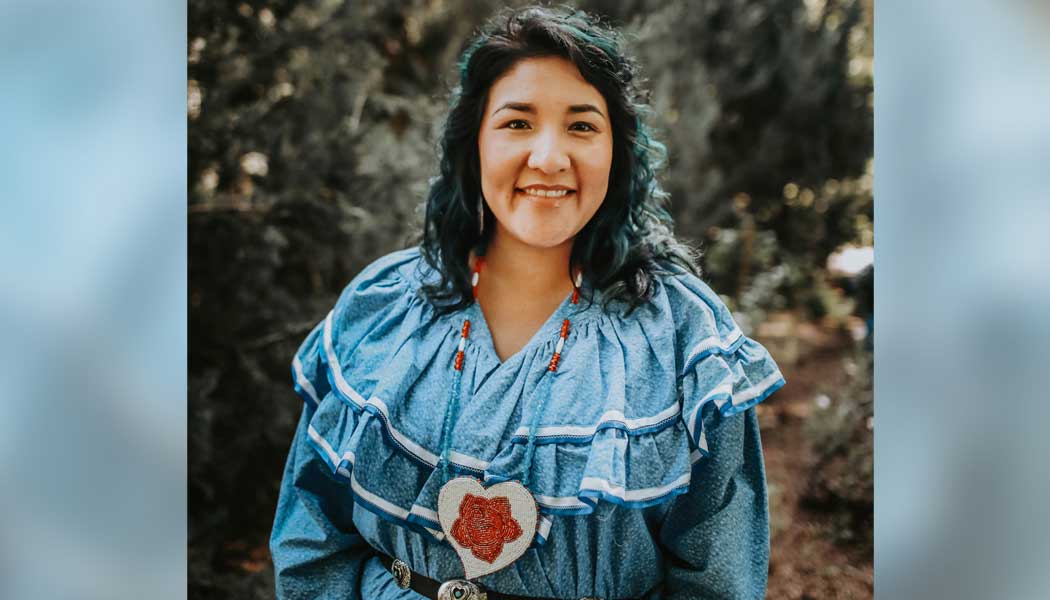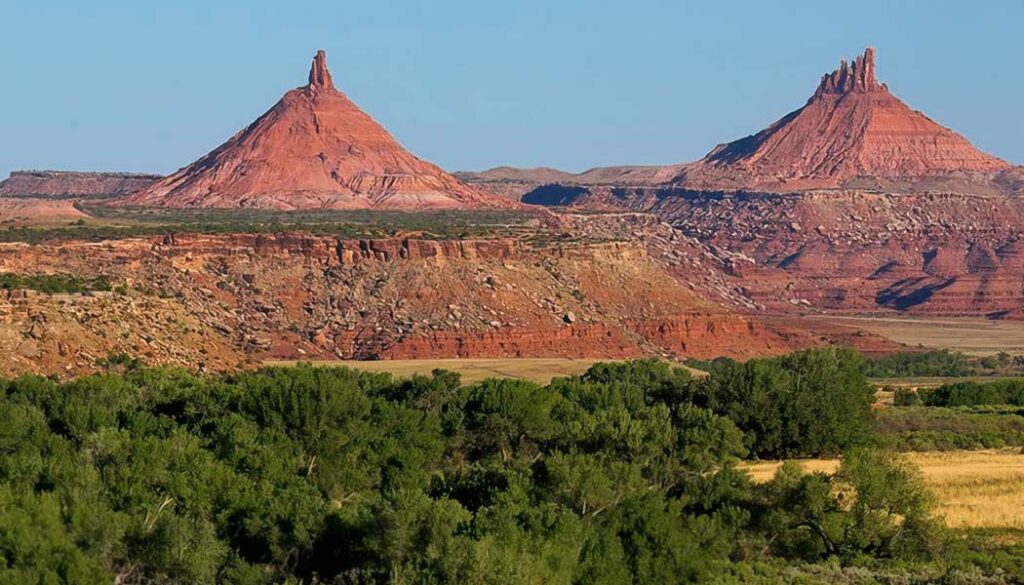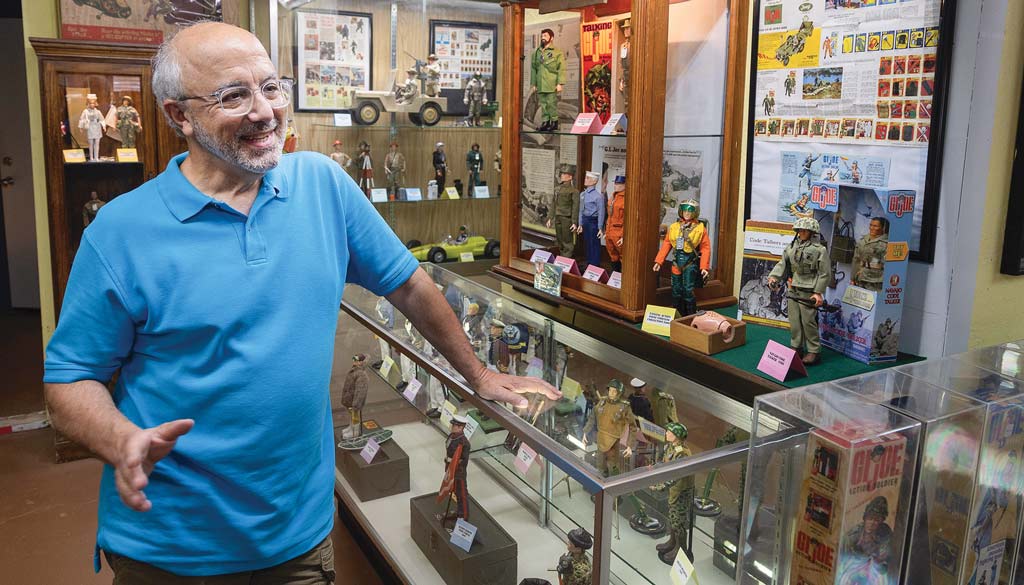MPA grad melds culture and career to meet Native needs
Charissa Miijessepe-Wilson supports historic coalition of tribes that oversees Bears Ears National Monument.

As co-director of the Bears Ears Inter-Tribal Coalition, a consortium of five tribal nations that helps oversee the 2,100-square-mile Bears Ears National Monument in Utah, Charissa Miijessepe-Wilson is well aware that most Americans likely know the remote wilderness area—if they’ve heard of it at all—only because of its recent role as a battleground in presidential politics.
Established by Barack Obama as a 1.36-million-acre protected area in 2016, the monument was slashed to 201,000 acres by Donald Trump in 2017, then restored by Joe Biden to its original size in 2021.
“Bears Ears has been and continues to be a bit of a political football,” says Miijessepe-Wilson, g’18, who joined the coalition shortly after completing KU’s highly regarded master of public administration program and became co-director in 2022. “That’s not something that the tribes necessarily want. I don’t think anybody wants that, honestly, even the state of Utah and the larger political ideologies that are at play here.”
For the Native tribes who consider this vast swath of rugged canyons, buttes and grasslands sacred, the historical and cultural significance of Bears Ears runs much deeper, of course. An estimated 100,000 archaeological sites dot the area, including Pueblo cliff dwellings that have been dated to more than 3,500 years ago.
Yet there is also history being made right now, according Miijessepe-Wilson, starting with the coalition itself, whose five delegates represent the Ute Indian Tribe, Ute Mountain Ute Tribe, Zuni Tribe, Hopi Tribe and Navajo Nation. Together they collaborate with the U.S. Forest Service and the Bureau of Land Management to determine how the federal lands will be managed. Working from her Kansas City home and the coalition’s Albuquerque, New Mexico, headquarters, Miijessepe-Wilson supports the delegates’ decision-making and communication and oversees daily operations and strategic planning.
This effort marks the first time that tribes have been able to help set the agenda for a U.S. national monument, she says.

“We recently released our first draft resource management plan for the Bears Ears National Monument, and not only is it the first time that a plan has been collaborated by a coalition of multiple tribes in tandem with the Forest Service and BLM, but the management plan that the tribes put forward has been chosen as the preferred option—and that option is actually the one that’s most grounded in traditional ecological knowledge. There’s never been a tribally driven option within management planning before.”
Released March 8 and open to public comment until June 11, the proposal also marks the first time Native tribes have played a meaningful role in management decisions about their ancestral homelands that are off-reservation.
“That’s really, really important, because that means that other tribal nations who have been illegally removed from their homelands have an opportunity to have a say over how their ancestral homelands are managed—including mine,” says Miijessepe-Wilson, a member of the Prairie Band Potawatomi Tribe, who were forced to move from their ancestral lands in the Great Lakes area to a reservation in Kansas. “For me, that’s a definite step in the right direction for overall restorative justice in this country, and a way to start making a lot of those wrongs right in terms of not only racial justice, but also environmental justice and climate justice. It’s just another of the ways that we’re trying to make a path forward here at Bears Ears.”
Finding a career trajectory beyond the traditional public administration route of city management has enabled her to meld tribal traditions and professional life. She credits the KU program, particularly John Nalbandian, professor emeritus of public affairs and administration, with making a strong case for “values-driven” leadership.
“Not only did the program allow me to see it’s possible to pair my culture and my profession, but Bears Ears specifically has allowed me the opportunity to weave together those threads more closely in a more intentional way than I would’ve been able to if I had pursued a different path,” she says.
“It’s really important to me to pursue professional opportunities that uplift and advance agency on behalf of Indigenous nations, but particularly those practices and those values that are grounded in our culture, because for Indigenous people, our culture is the heart of what we do. So I do that very meticulously and purposely now. It’s another building block for exploring, ‘OK, how can I make this path wider? How can I make these intentions align so that I am ultimately in service to greater Indian Country and Native people?’”
Steven Hill is associate editor of Kansas Alumni magazine.
Top photo by Lost In Life Photos
Bears Ears photo courtesy of the U.S. Department of the Interior
/




